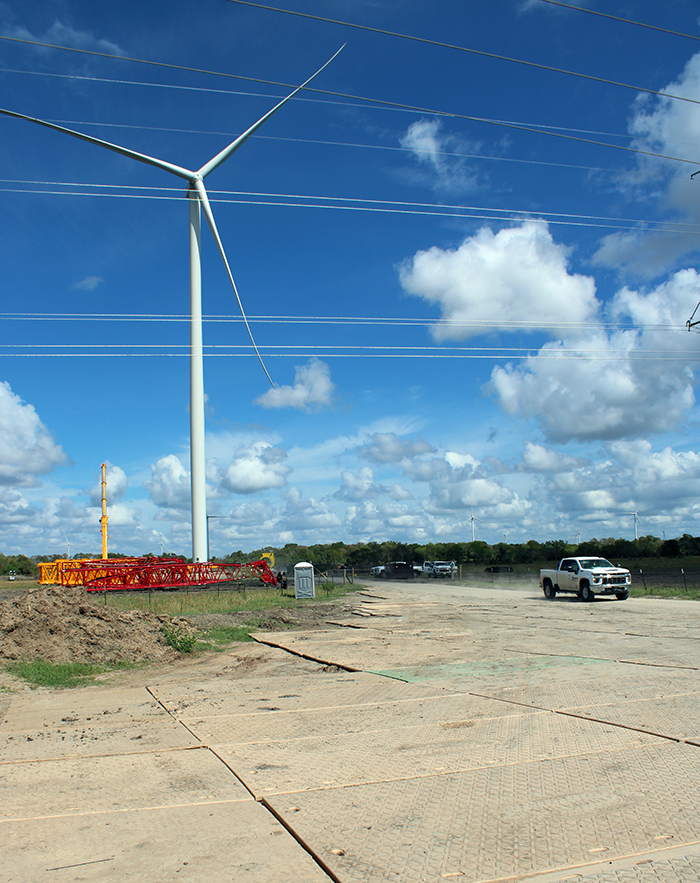Harnessing the Power of Composite Matting for Renewable Energy Projects
 In the ever-evolving world of renewable energy, the pursuit of innovation and sustainability is continuous. From wind farms and solar installations to hydroelectric plants and beyond, the development and maintenance of these vital projects require the construction of temporary access roads, staging areas, and other infrastructure and call for innovative and sustainable solutions. Among these is use of composite matting. These durable, versatile, and eco-friendly mats have proven to be a game-changer, offering a myriad of benefits to renewable energy endeavors. Let's delve into the benefits of using composite matting on your renewable energy projects.
In the ever-evolving world of renewable energy, the pursuit of innovation and sustainability is continuous. From wind farms and solar installations to hydroelectric plants and beyond, the development and maintenance of these vital projects require the construction of temporary access roads, staging areas, and other infrastructure and call for innovative and sustainable solutions. Among these is use of composite matting. These durable, versatile, and eco-friendly mats have proven to be a game-changer, offering a myriad of benefits to renewable energy endeavors. Let's delve into the benefits of using composite matting on your renewable energy projects.
Stability and Safety
One of the foremost benefits of composite matting is its ability to provide a stable and secure foundation for renewable energy infrastructure. Whether you're setting up a solar farm in a remote desert or constructing a wind turbine on rugged terrain, these mats excel in creating a level and safe working surface. They distribute weight evenly, preventing equipment from sinking into soft ground and reducing the risk of accidents.
Environmental Sustainability
Renewable energy projects are, by nature, designed to reduce our carbon footprint and combat climate change. Composite matting aligns perfectly with this goal. Engineered from recyclable materials like high-density polyethylene (HDPE), these mats are not only durable but also environmentally friendly. They can be reused across multiple projects, minimizing waste and reducing the need for new raw materials, and can be recycled and made into new mats at the end of their life.
Quick and Cost-Effective Installation
Time is often of the essence in renewable energy projects. Composite mats are incredibly easy to install and can be deployed swiftly, significantly cutting down on project timelines. They are lightweight and easy to transport, which can save on transportation costs. With composite matting, you can reduce labor and equipment expenses, ensuring that your project remains within budget and on schedule.
Minimal Environmental Impact
Protecting the surrounding environment is a top priority for renewable energy projects. Composite matting helps mitigate the ecological impact of construction and maintenance activities. By preventing soil erosion, minimizing disturbance to natural habitats, and reducing the release of contaminants, these mats help preserve the delicate balance of ecosystems.
Longevity
Renewable energy projects are long-term investments. The durability of composite matting ensures that they can withstand the test of time. They resist rot, corrosion, and decay, maintaining their integrity even in harsh weather conditions. This longevity reduces the need for frequent replacements, saving both time and resources.
As the renewable energy industry continues to grow, composite matting is likely to become an increasingly important part of the construction process. Its stability, environmental sustainability, ease of installation, versatility, and minimal environmental impact make it a wise choice for developers and operators in the renewable energy sector. By incorporating these mats into your projects, you not only ensure the success and efficiency of your endeavors but also contribute to a greener and more sustainable future.
.png)

